Dir: William Wellman
Screenplay – Milton Krims – based on Igor Gouzenko’s story
Cast: Dana Andrews. Gene Tierney
Popular legends about spies -outside the Bond-MI-Bourne domain-are usually of a dedicated man, deep inside the enemy/ target country’s system, quietly collecting information for one’s own country. But sometimes, the simple soldier or the unimportant file clerk can do more operational damage than someone at the top.
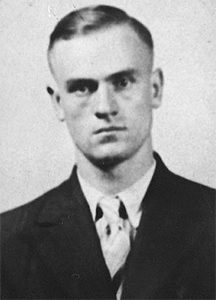 Igor Gouzenko was a cypher clerk in the Soviet embassy in Ottawa during World War 2. The Soviet Union was allied with The West – a sort of marriage of convenience. The marriage of convenience broke down quickly due to various factors. Mutual suspicion. Distrust. Unbridled Soviet espionage in the West. And finally, the Igor Gouzenko case.
Igor Gouzenko was a cypher clerk in the Soviet embassy in Ottawa during World War 2. The Soviet Union was allied with The West – a sort of marriage of convenience. The marriage of convenience broke down quickly due to various factors. Mutual suspicion. Distrust. Unbridled Soviet espionage in the West. And finally, the Igor Gouzenko case.
Gouzenko, the cypher clerk, held one of the most sensitive jobs in any Embassy. He may be a nobody, but he knew all the secrets as all the critical messages between the Soviet Embassy in Ottawa and the Soviet Union passed through his hands after he had enciphered them to make them unreadable for any enemy who was listening in.
Due to the overall high pressure and shabby treatment of some colleagues, Igor started having doubts about the Soviet system. His wife Anna also had her doubts. In 1945, after a two-year tour of duty, he was recalled back to the Soviet Union.
Thinking it was a now-or-never moment, Igor gathered as many sensitive messages as possible and, with his wife, went to the Royal Canadian Mounted Police to ask for asylum. They told him to come the next day during working hours! He went back to his apartment and tried again the next day. When the Soviet Embassy found he was missing, they set the ball rolling to get him back. After many hit-and-miss and even comical encounters, Gouzenko finally got political asylum.
The documents proved to be dynamite as they listed chapter and verse about the Canadian Government’s – both civil and military – deep penetration by Soviet Intelligence. The Gouzenko case’s enormous importance as the first Big Case of the Cold War is due to one simple fact – it was the slender thread that led to the “Atomic Spies” inside the American Atom Bomb project. This led to the exposure of many, such as physicists Alan Nunn May and Klaus Fuchs, American Communists and Soviet Agents, a deep cover Soviet Illegal couple who fled.
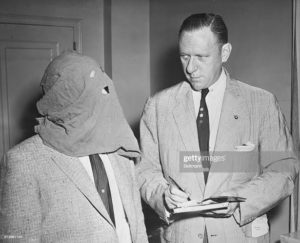
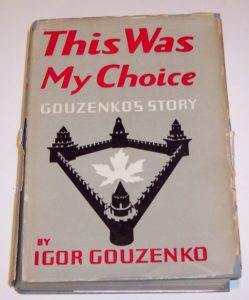
After being given asylum, Gouzenko lived under a false identity and was paranoid about giving interviews, never showing his face. He finally died in 1982 while his children lived as Canadian citizens. He even wrote a book “This Was My Choice” about his experience.
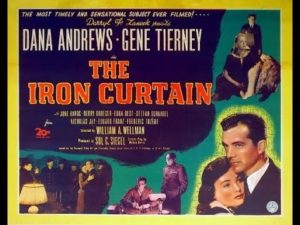
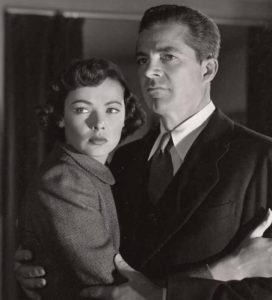
This story is brought on screen exceptionally well in this “small” film even though it has two “big name” stars. Dana Andrews and Gene Tierney were the “hot star pair” after their 1944 Noir hit Laura. To capitalise on the “Star Pair”, some of the scenes and shots look like leftovers from Laura with dark contrasts and deep shadows, which is uniquely possible in Black and White cinematography, enhancing the overall feeling of dread. The “studio” feel is apparent.
Given this background, the film is exceptionally tight and moves at a decent pace. There is no “foaming at the mouth”. How can there be? After all, most of the characters are Russians! In showing how everything happened, the statement is in the viewer’s mind—no need to scream “soviet perfidy” as in some films of the McCarthy Era and even later.
Performances are adequate and competent. There is some slight “sexing up” of the story to fit the Hollywood feel and not make it too dry. This is an excellent film that tells the story of one of the most critical cases that began the Cold War spy battles for the next forty years and led to eternal mistrust on both sides of the East-West divide.
The film is FOR FREE ON YOU TUBE
(The above link is clickable )
This is yet another example of a “small” or even “obscure” movie that proved far more interesting to watch than anticipated.
Script – 4 out of 5
Story – 4 out of 5
Direction – 4 out of 5
Photography – 4 out of 5
Total – 4 out of 5
Leave a Reply
Want to join the discussion?Feel free to contribute!